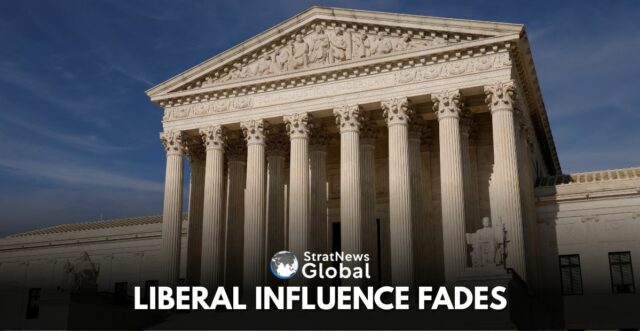The U.S. Supreme Court’s three liberal justices saw their influence diminish during the recently concluded term, with their frustrations over the dominant conservative majority surfacing publicly in major rulings involving Donald Trump and transgender rights.
In five of the biggest cases of the term, which wrapped up with its final rulings on June 27, the court’s six conservative justices were in the majority and liberal Justices Elena Kagan, Sonia Sotomayor and Ketanji Brown Jackson were in dissent.
Top among these was the ruling on the term’s final day that curbed the ability of judges to impede Trump’s policies through nationwide injunctions. The other four came in cases at the heart of the American “culture wars.”
Those included rulings that upheld a Tennessee law banning gender-affirming care for transgender minors, backed a Texas law requiring pornographic websites to verify the age of users in an effort to protect minors, let parents opt children out of public school classes with LGBT themes and allowed South Carolina to strip abortion provider Planned Parenthood of Medicaid funding.
‘Shadow Docket’
The ideological divide was abundantly clear in cases in which the justices acted on an emergency basis, sometimes called the “shadow docket,” which produced a string of orders permitting Trump to enact policies impeded by lower courts.
Trump’s appointment of three justices – Amy Coney Barrett in 2020, Brett Kavanaugh in 2018 and Neil Gorsuch in 2017 – during his first term in office gave the court its 6-3 conservative majority, and the nation’s top judicial body has since moved American law decisively rightward, as it did again this term.
“The three liberals are out of cards at the table,” said George Mason University law professor Robert Luther III, using a card-game analogy. “They just don’t have the numbers to make an impact.”
Their lack of sway was particularly evident in “core culture war cases,” added Luther, who has advised Trump on judicial nominations.
“These are the kinds of cases that brutal confirmation fights like Kavanaugh’s are all about,” Luther said, referring to the Republican-led Senate’s narrow confirmation of Trump’s nominee following allegations of sexual misconduct dating back decades that Kavanaugh denied. “These are the kind of cases that prove the right is winning the war for the courts.”
The Roberts Court
The court has been under the guidance of conservative Chief Justice John Roberts since 2005. But it was after Trump appointed Barrett to replace the late liberal Justice Ruth Bader Ginsburg five years ago that the liberal bloc’s influence sank to a low point.
“I think it’s a mistake to think the liberals ever had serious sway on the Roberts Court since they’ve been winnowed down to three members,” said Georgia State University law professor Anthony Michael Kreis.
“The only question is this: can the liberals convince their colleagues, on occasion, that they’re wildly out of step with the public and need to pull back on some decisions? And do two of their conservative colleagues even care?” Kreis asked.
If the liberal justices remain united, they need two conservatives to join them in a case in order to prevail.
In the emergency docket cases, which reach the justices on a condensed timeline that leaves little time for consensus-building, the six justices appointed by Republican presidents gave a green light to several Trump policies. Endorsing his expansive view of presidential authority, they let him move forward with mass deportations, fire the heads of independent federal agencies and ban transgender people from the military.
In the June 27 ruling authored by Barrett in the birthright citizenship case, the Supreme Court did not address the legality of a Trump directive blocked by three federal judges. Trump had directed federal agencies to refuse to recognize the citizenship of children born in the United States who do not have at least one parent who is an American citizen or lawful permanent resident, also called a “green card” holder.
Instead, the court curbed the ability of federal judges to issue “universal” injunctions to block the Republican president’s policies nationwide.
Sotomayor, the most senior of the liberal justices, read her entire dissent from the bench, signalling her strong disagreement with the conservative majority’s ruling. Over the course of 20 minutes, Sotomayor denounced the decision, saying “no right is safe in the new legal regime the court creates.”
“Today, the threat is to birthright citizenship,” Sotomayor wrote in her dissent. “Tomorrow, a different administration may try to seize firearms from law-abiding citizens or prevent people of certain faiths from gathering to worship.”
(With inputs from Reuters)





